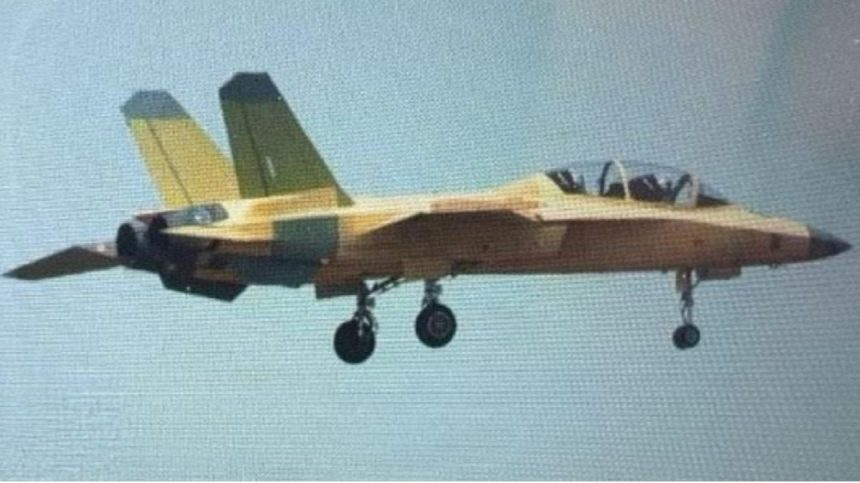China’s next-generation trainer, built by HAIG, finally emerged and performed its maiden flight.
After much anticipation, China’s next-generation trainer and light combat aircraft conducted its maiden flight on Oct. 28, 2025. The aircraft was photographed both on the ground and in the air, still wearing a yellow primer coating and carrying no visible serials.
The JL-XX
The new aircraft is developed by HAIG (Hongdu Aviation Industry Group), based in Nanchang, which is known for developing the CJ-6, JL-8, and JL-10 trainers for the PLA (People’s Liberation Army). The jet’s designation has not yet been officially announced, and thus is referred to as the JL-XX by Chinese Military watchers.
Via „ ACuriousPLAFan“/SDF:
„ Turns out that “mini-Hornet” i.e. JL-10 with twin vertical stabilizers isn’t exactly fan-fiction.
Posted by @琴石2022 on Weibo.“ pic.twitter.com/Fi6cwox9Vx
— @Rupprecht_A (@RupprechtDeino) May 6, 2024
Footage of the new trainer first emerged this July, when it was briefly visible in the background of a CCTV (China’s main news network) segment about the JL-10. However, this is the first time that it has been photographed in flight.
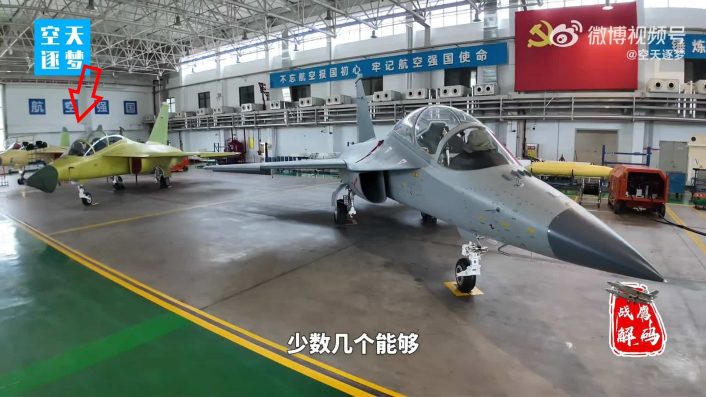
The JL-XX appears to be largely a clean-sheet design, though it draws on the JL-10’s design heritage. Among the differences are a new, redesigned nosecone, twin canted vertical stabilizers – closely resembling the ones on the J-35 series of fighters (in contrast to the single vertical stabilizer on the JL-10), and the addition of twin ventral stabilizers reminiscent of that on the J-20 series.
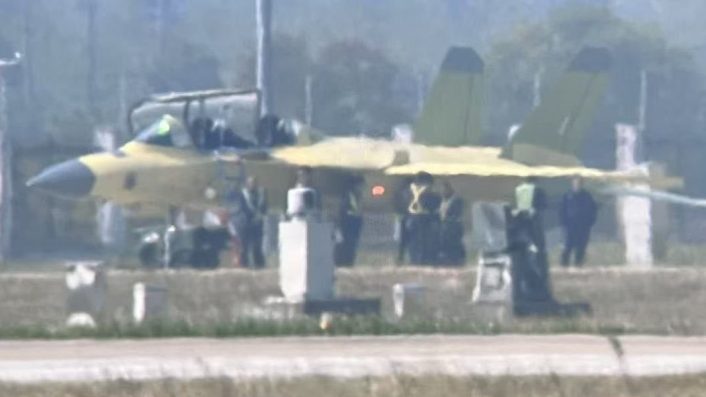
The presence of wingtip hardpoints and a gray radome (that could point to an onboard radar) strongly hint to the JL-XX being a dual use light-combat and LIFT (Lead-In Fighter Training) aircraft, comparable to platforms like South Korea’s KAI FA-50. This way, the aircraft would also be able to fill other roles in addition to merely training new pilots.
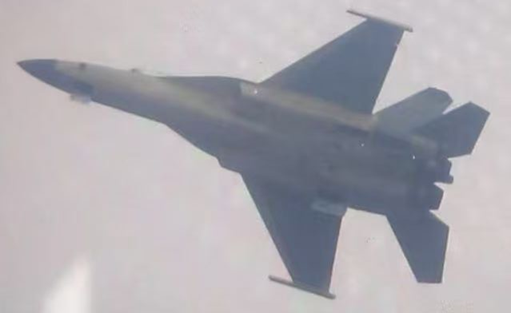
The JL-XX is believed to be powered by twin “Minshan” turbofan engines ,rated at approximately 4,000-5,000 kgf thrust each, replacing the two Ukrainian AI-222-25 that power the JL-10. The exact designation for the engines remains unconfirmed, with competing reports identifying them as the WS-17 or the WS-12.
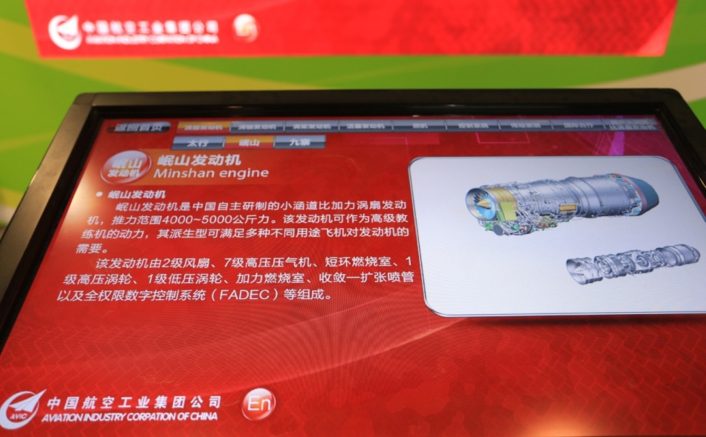
Other Advanced Trainers in service with the PLA
The PLAAF (People’s Liberation Army Air Force) and PLANAF (People’s Liberation Army Navy Air Force) currently operate two advanced trainers in their inventory: the JJ-7-based JL-9, and the more advanced JL-10. While the two trainers were developed at more or less the same time period – with the JL-9 first flying in 2003 and the JL-10 in 2006 – the two designs reflect a contrasting design philosophy.
…… and it even alread pic.twitter.com/UnP3sSV3Av
— @Rupprecht_A (@RupprechtDeino) October 28, 2025
The JL-9 was developed as a more cost-effective solution based on the JJ-7 trainer, which was itself derived from the J-7 – the MiG-21 variant produced by the Chinese – and shares many common components like its WP-13 engine and mechanical flight control system. Its lineage is fairly obvious when looking at the tail section of the aircraft, but the front fuselage and avionics were completely modernized. Export versions designated FTC-2000 were also sold to multiple customers like the air forces of Sudan and Myanmar to be used as a cost-effective light attack jet.
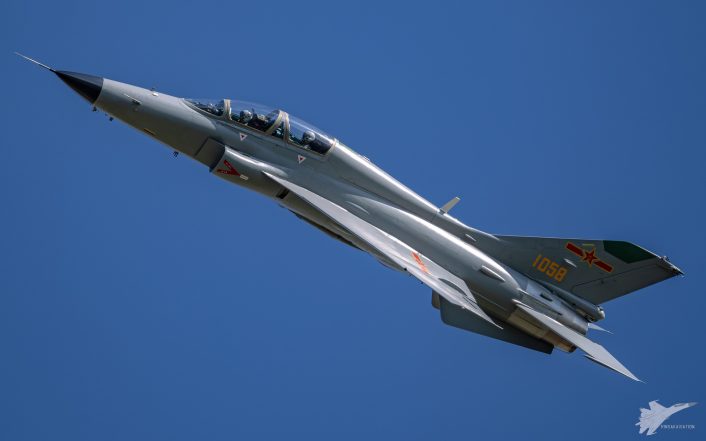
Its naval variant, designated as the JL-9G, was originally equipped with a tailhook, but it caused too much stress on the airframe and was thus removed on the production variants and thus it is only able to simulate ski-jump takeoffs from land bases and landing without arresting gear. The jet also features several improvements on the baseline JL-9 to allow for more maneuverability and control at lower speeds, as necessary for carrier pilots, such as strengthened landing gear, enlarged wings, leading edge slats and root extensions. It also features a DSI like the FTC-2000, and later blocks also use a holographic HUD (Heads Up Display) like that on the JL-10.
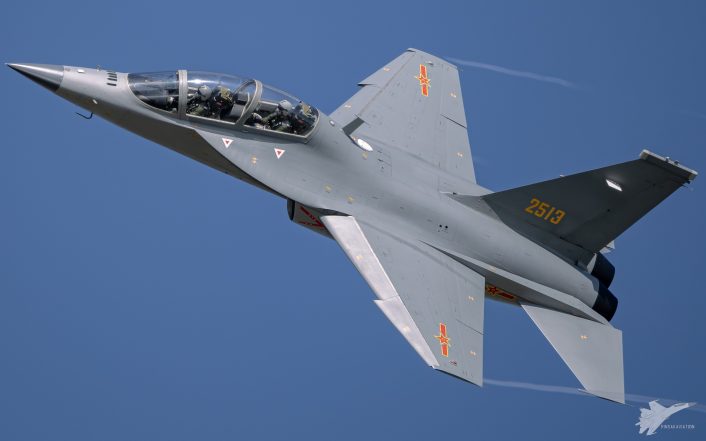
The JL-10, on the other hand, was developed as a more modern solution. It features two engines, digital fly-by-wire controls, a glass cockpit, and optional afterburning turbofans, and was developed by HAIG with technical assistance from Yakovlev (who had previously teamed up with Aermacchi to develop the M-346 before breaking off to design the Yak-130, thus the JL-10’s uncanny likeliness to the M-346 and Yak-130). It is also exported under the designation L-15, and has so far been ordered by countries like the UAE (United Arab Emirates) and Zambia.
Not much is known about its naval version, although at least one mockup has been sighted on the soon-to-be commissioned Fujian. It is speculated to feature a larger dorsal air brake, a larger wing area, reshaped horizontal and vertical stabilizers, in addition to the modifications required for an aircraft to operate from carriers.
Regarding the rumoured JL-10J carrier-capable jet trainer, another hint was spotted next to the carrier Fujian: It appears to be an unfinished JL-10J mockup stored on the dockside .
So question is: Two tails as shown in the latest CG or just one like the regular JL-10? pic.twitter.com/BM8W8MRGWK
— @Rupprecht_A (@RupprechtDeino) March 19, 2024

